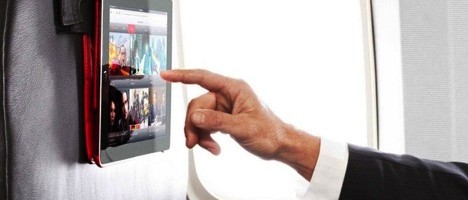Hertz Europe Celebrates A Century With #HertzSuperStart
In 1918, Hertz's founder Walter L. Jacobs opened a car rental business in Chicago, U.S. that later expanded to become the first global car rental...

The meetings and events world has been rocked to its core in 2020. The COVID pandemic has made gatherings of more than 10 (let alone 50, 250, or 500+ people) nearly impossible. As a result, brands need to find new ways to engage with consumers, media, and influencers. Previously, for a brand launch or major campaign, you’d expect a 200+-guest mega-event in a built out raw space. Now, brands are struggling with how to make an immersive experience come to life through Zoom and a 12-inch computer screen. What does the future of the meetings and events space look like? As with so many other industries during this uncertain time, it’s not entirely clear. But there are plenty of hints of what’s to come. 
In the past, events on the whole came with a hefty price tag. As the economy continues to feel the effects of COVID and brand budgets see a shift in allocation, we can expect events to continue to change too. Brands will reevaluate their entire approaches. More and more, brands will be asking:
Events often brought celebrities and influencers on board as hosts, in order to generate buzz for a brand. In a primarily virtual world, brands will have to ask if these personalities are really essential. Can their impact be translated via a screen?
From awards shows to small media dinners and everything in between, an event’s effectiveness often relied on “that photo moment.” An entire event would be built with the goal of creating scenes that bring people together, allowing for organic moments that bring a brand to life. The goal was to make the viewer wish he or she had been there to witness it themselves – this exclusive moment that only could happen there. How do you create that spark – that need to be in the room – if there’s no room to be in?
We’re already seeing some attempts at adding a sense of spectacle to virtual meetings and events. Check out Travis Scott’s recent eye-popping collaboration with Fortnite, which brought the pop star into the video game’s immersive/interactive world. More than 12.5 million people joined in to watch.
Similarly, we’ve seen live TV moments that brought stars from their own homes to viewers own via their small screens with the One World Together at Home concert and the Graduate Together event for the class of 2020. As we enter the summer season this weekend, music festivals, concert series, blockbuster movie premieres, will move into an online portal for safe, at-home viewing.
One thing is safe to assume, the future of events will be a new hybrid of in-person encounters and virtual experiences. As with most aspects of life pre-COVID, it will be difficult to fully go back to that in-person world we used to know. There will be a new set of standards for business travel, for event spends, and items we used to consider essential.
Even as virtual meetings and events become more common, attendees will still want that human touch. Ultimately, in-person events will return. There will always be something special and more personal about human to human contact. We will always want that element of seeing something live. We want to be a part of the energy that only happens when people gather together.

In 1918, Hertz's founder Walter L. Jacobs opened a car rental business in Chicago, U.S. that later expanded to become the first global car rental...

1 min read
Where digital meets travel + lifestyle … A collection of can’t-miss news from this week, including spring travel trends. Sign up to get the TURNER...

After collaborating with technology and aviation specialists (including Google and Microsoft), travel-booking website, SkyScanner, released a new...